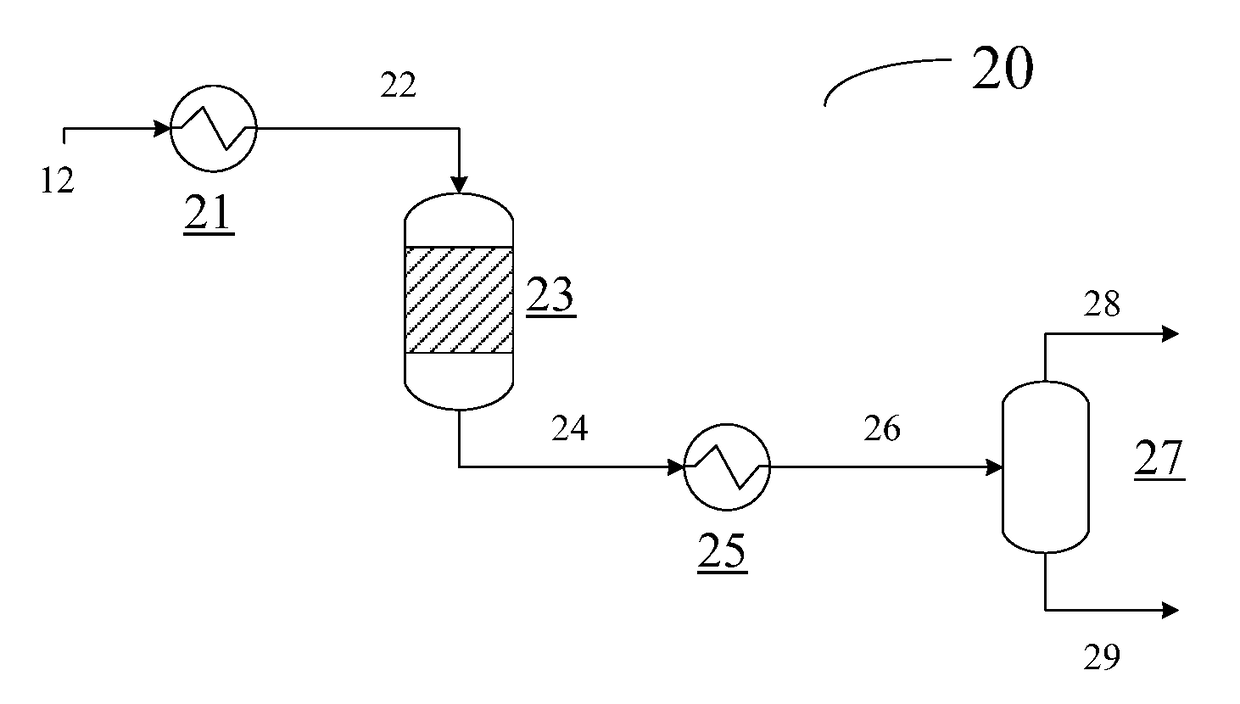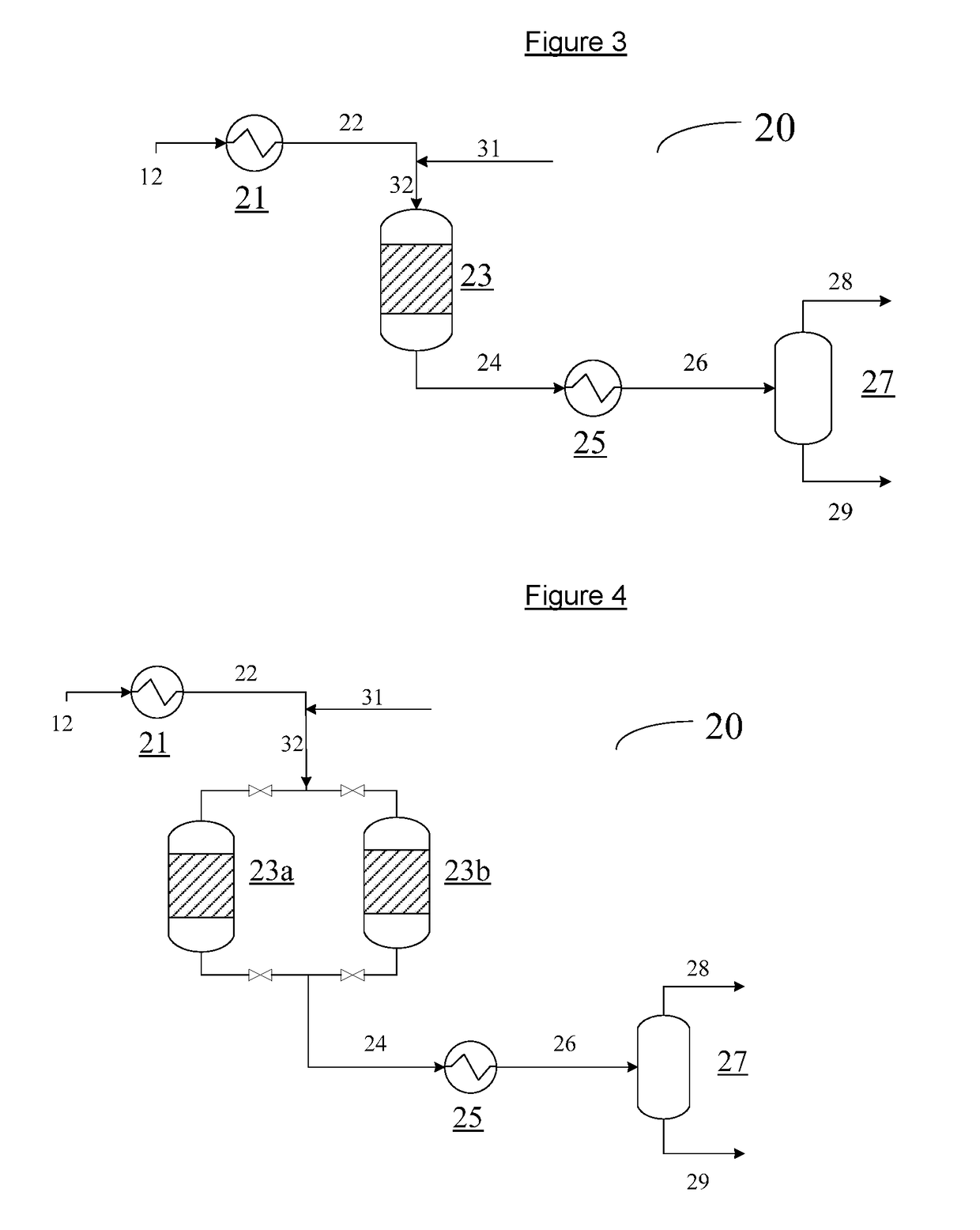Direct olefin reduction of thermally cracked hydrocarbon streams
a technology of thermal cracking and olefin reduction, which is applied in the direction of hydrocarbon oil treatment, hydrocarbon oil treatment, catalytic naphtha reforming, etc., can solve the problems of the largest portion of facility cost and complexity currently endured, and achieve the effect of reducing olefins
- Summary
- Abstract
- Description
- Claims
- Application Information
AI Technical Summary
Benefits of technology
Problems solved by technology
Method used
Image
Examples
example 1
[0083]A fluid stream 12 as referenced in FIG. 1, comprising naphtha and distillate boiling range material with 20 wt % olefin content was placed in a fixed bed reactor with catalyst containing 0.1 wt % of a silver and gallium mix on a zeolite substrate. With operating conditions at 350° C. and 15 bar, and a residence time of 1 hour, the olefin conversion was over 75 wt % with a 98 wt % mass liquid yield while the demetallization, desulfurization and denitrification reactions were negligible. The product liquid from this fixed bed reactor representing stream 29 in FIG. 1 when mixed with stream 13 in FIG. 1 would result in a stream 30, that meets pipeline olefin specification.
example 2
[0084]A fluid stream 12 as referenced in FIG. 1, comprising naphtha and distillate boiling range material with 20 wt % olefin content was placed in a fixed bed reactor comprising catalyst containing 0.1 wt % of platinum on an extruded alumina oxide cylinder. With operating conditions at 300° C. and 70 bar, and a residence time of 1 hour, the olefin conversion was over 98 wt % with a 98% mass yield while the demetallization, desulfurization and denitrification reactions were negligible. The product liquid from this fixed bed reactor representing stream 29 in FIG. 1 when mixed with stream 13 in FIG. 1 resulted in stream 30 that met pipeline olefin specification.
PUM
 Login to View More
Login to View More Abstract
Description
Claims
Application Information
 Login to View More
Login to View More - R&D
- Intellectual Property
- Life Sciences
- Materials
- Tech Scout
- Unparalleled Data Quality
- Higher Quality Content
- 60% Fewer Hallucinations
Browse by: Latest US Patents, China's latest patents, Technical Efficacy Thesaurus, Application Domain, Technology Topic, Popular Technical Reports.
© 2025 PatSnap. All rights reserved.Legal|Privacy policy|Modern Slavery Act Transparency Statement|Sitemap|About US| Contact US: help@patsnap.com



